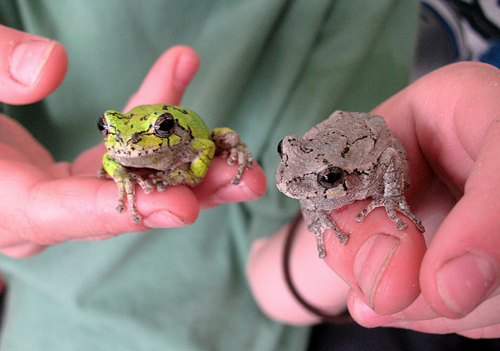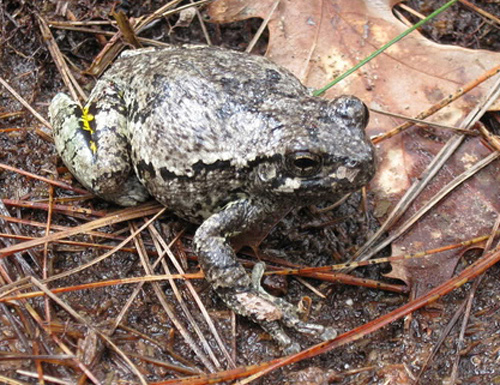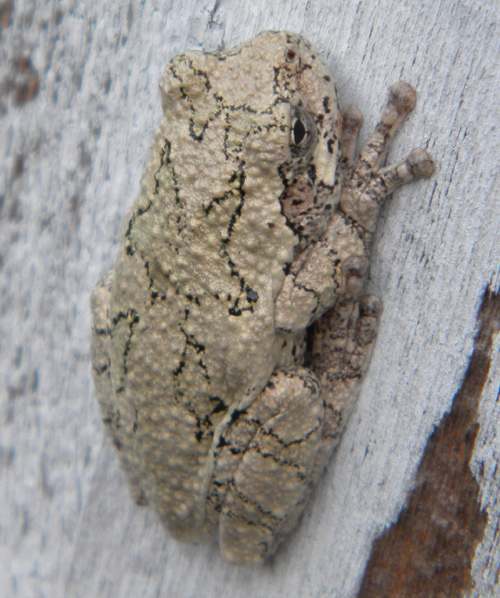Gray treefrogs are small and compact. Their skin is often gray but changes color and can be very dark or very white or bright green. Their skin is blotchy. Skin along their inner thighs is bright yellow with black markings. They are 1 to 2 1/2 inches long. The gray treefrog is another small frog with a big voice.
Gray treefrogs range through the eastern half of the US, except for southernmost Florida and northernmost Maine. They are found throughout Connecticut. They frequent moist areas and live high in trees and shrubbery near water. They use shrub marshes most often for breeding. The aboreal adults come down to water to breed and lay eggs. Tadpoles live in the water until they reach maturity. Gray Treefrogs are active during the warm season and shelter for the winter in underground burrows. They can survive being frozen. They are nocturnal.
Adult gray treefrogs are insectivores and hunt bugs by shooting out their sticky tongue to trap an insect and draw it back into their mouth. They eat all sorts of insects. Immature frogs, tadpoles, feed on plant matter.
Gray treefrogs emerge from their burrows in April. Mating season is in May, and the songs of the males are most pronounced during the mating season. A male grabs the female around her chest with his front legs and clings until she lays her eggs in the water. He deposits sperm on top of them. It is common for Gray treefrogs to mate and lay eggs in marshy areas that contain shrubs. Gray treefrog females lay masses of 30 to 40 eggs attached to plants at the water's surface. They lay a total of about 1,800 eggs. In a few days the eggs hatch into tadpoles that may have red tails. It takes about 4 to 8 weeks for the tadpoles to absorb their tails, grow legs and develop lungs, at which point they leave the water and hop off to begin life on in the trees.
Gray treefrogs are solitary, except when they congregate to breed in the spring. The singing of the males is a loud, raucous trill. They sing more during the breeding season, but you can hear gray treefrogs calling all summer from the trees during warm, humid evenings, especially right after a summer rain. Their chorus is lovely and recordings always remind me of sultry summer nights. Click the gray treefrog call link in between the photos for an example.
Male Gray treefrogs produce their songs by inflating part of their mouth lining under their throat with air through an opening in the bottom of their mouths. They then close off their mouths and nostrils and pump air between their lungs and this vocal sac over their vocal chords. The vocal sac of a calling male treefrog is clearly visible as a bubble under his throat.
Neat Facts
Gray treefrogs are indistinguishable from Cope's gray treefrog Hyla chysoscelis in the field but only have half as many chromosomes. The two species share range and habitat. The trill of the Cope's treefrog is reportedly faster.


